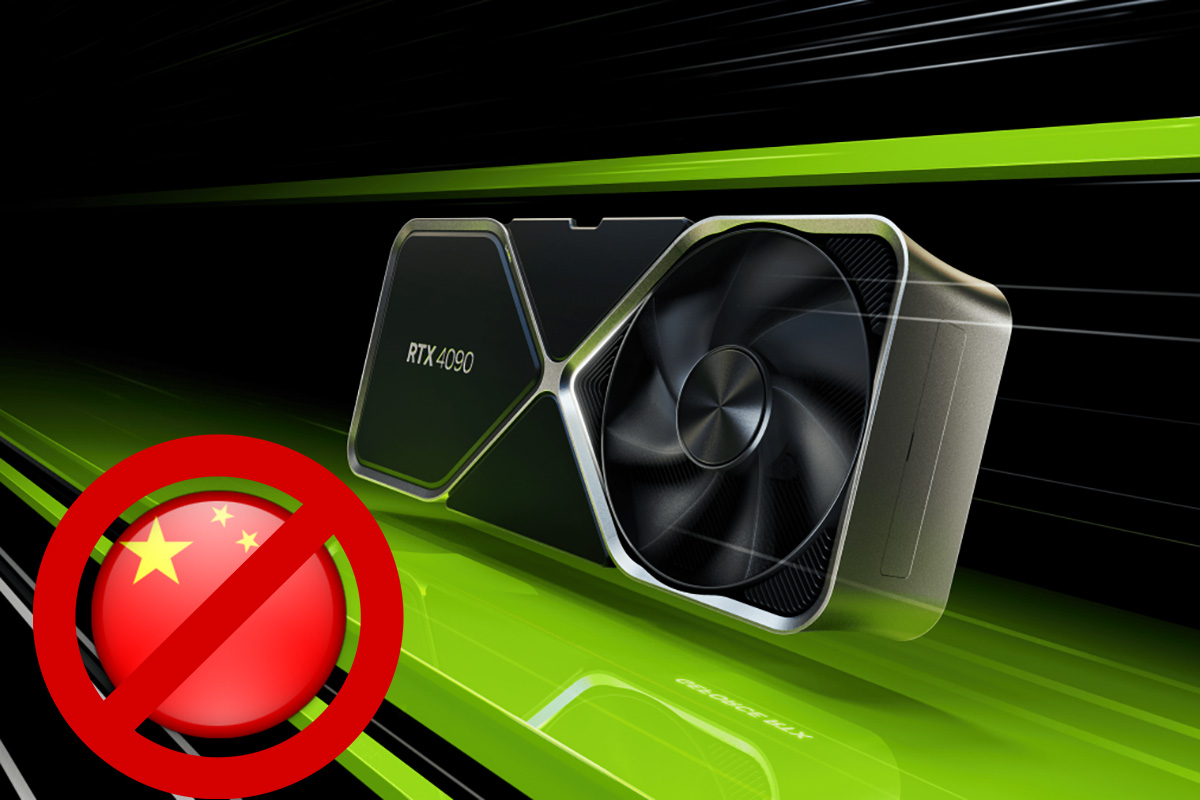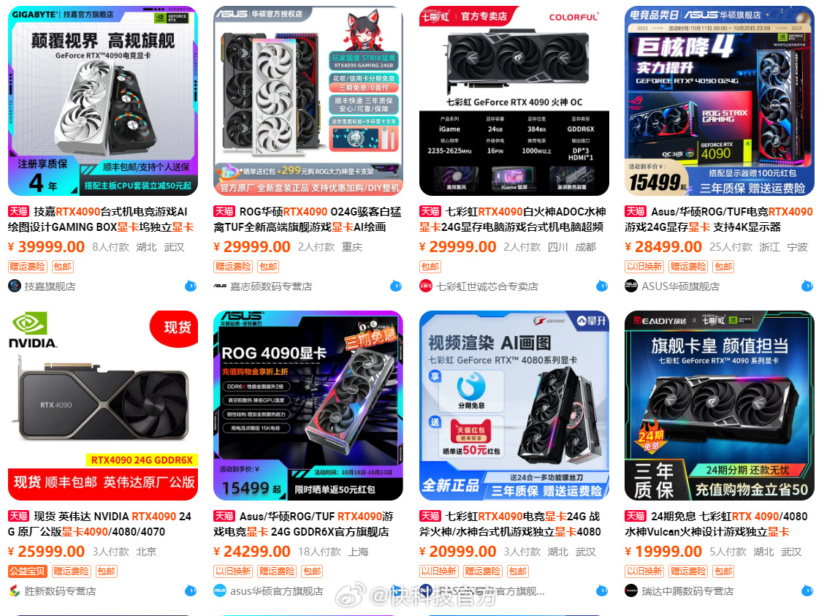
The US ban on NVIDIA RTX 4090 exports to China has led to an increase in global prices for video cards
This week, the U.S. Department of Commerce updated its list of controls on the export of powerful graphics processors to China and a number of other countries. The NVIDIA RTX 4090 video card was also banned due to its bandwidth and processing power. This caused a price spike in the Chinese market and affected the price of video cards globally.
The restrictions included NVIDIA H800 computers that the company exported to China, as well as the most powerful custom RTX 4090 graphics cards. The ECCN 3A090 specifications stipulate that the memory bandwidth for export to China should not exceed 600 GB/s, and the total computing power should not exceed 4800 TOPS.
Despite the fact that the restriction has not yet been implemented, information about it has caused a stir and shortages in the Chinese market. Sellers quickly ran out of stock, and prices more than doubled. The recommended price on the Chinese market is 12,999 yuan, but now they are sold from 26,000 and up. Many stores have already removed the video card from their offerings.

The new U.S. restriction does not apply only to China. Here are the countries to which the RTX 4090 cannot be exported:
Afghanistan, Armenia, Azerbaijan, Bahrain, Belarus, Burma, Cambodia, Central African Republic, China, Democratic Republic of the Congo, Cuba, Cyprus, Egypt, Eritrea, Georgia, Haiti, Iran, Iraq, Jordan, Kazakhstan, North Korea, Kuwait, Kyrgyzstan, Qatar, Kazakhstan, North Korea, Kyrgyzstan, Laos, Lebanon, Libya, Macau, Moldova, Mongolia, Oman, Pakistan, Qatar, Russia, Saudi Arabia, Somalia, South Sudan, Republic of Sudan, Syria, Tajikistan, Turkmenistan, United Arab Emirates, Uzbekistan, Venezuela, Vietnam, Yemen, Zimbabwe.
The absence of an affordable NVIDIA flagship means that gamers will focus on RTX 4080 and other less powerful graphics cards, and demand for them will grow accordingly. Also, exporting RTX 4090s to China, legally or illegally, is becoming more profitable than selling them, for example, in Europe and other regions, which can cause shortages. Theoretically, NVIDIA can release an Ada Lovelace model with the maximum allowed power, but nothing specific is known about such plans at the moment. One way or another, the situation should have a significant impact on the global graphics card market in a direction that is not friendly to the average user.

This influence is already being felt in the United States. The RTX 4090 is currently out of stock at the NVIDIA store, while the cheapest model at Newegg, Zotac Gaming, costs $1699. It is followed by the MSI card with a price of $1729, and both offers are rapidly disappearing. The cheapest RTX 4090 on Amazon also costs $1699. Only a few days ago, these graphics cards could be found at the recommended retail price, or even lower.
Currently, NVIDIA RTX 4090 is sold in Ukraine starting at UAH 63,794, and there is no price increase yet.

